Cerebral ischemia, also called cerebrovascular or brain ischemia, occurs when there is a shortage of oxygen or blood flow to your brain. This occurs due to a blockage or bleeding in the arteries that supply blood to your brain. The arteries could be blocked by a blood clot or from a sudden spasm. Deficiency of oxygen damages your brain and impairs its vital functions. If the oxygen flow is interrupted for a few minutes, it leads to tissue death, which is known as ischemic stroke or cerebral infarction.
What are the Symptoms of Brain Ischemia?
The symptoms of brain ischemia can last for a few seconds up to a few minutes and can be mild to severe. These include:
- Confusion
- Loss of consciousness
- Dizziness/vertigo
- Lack of coordination and body balance
- Loss of sensation on one or both sides of your body
- Weakness on one or both sides of your body
- Vision changes in one or both eyes
- Impaired speech
What are the Different Types of Brain Ischemias?
The different types of brain ischemia include:
Focal ischemia: This occurs when a blood clot blocks an artery in your brain. It is confined to a specific area in your brain.
Global ischemia: This occurs when your brain receives little or no blood supply, usually due to a cardiac arrest. It affects a larger part of the brain.
What are the Risk Factors for Cerebral/Brain Ischemia?
People with the following health conditions are at an increased risk of brain/cerebral ischemia:
- Vascular malformations
- Congenital heart defects
- Sickle cell anemia
- Arterial plaque buildup
- Irregular heartbeat
- Heart attack
- Blood clots
- Abnormal blood pressure
- High cholesterol
- Obesity
- Diabetes
What are the Treatment Options for Cerebral/Brain Ischemia?
The various treatments for brain ischemia include:
Medications
- To control blood pressure
- To lower blood cholesterol
- To dissolve blood clots - these include anticoagulants and antiplatelet drugs
Surgery for Brain Ischemia
The choice of surgery depends on your health condition, the severity of your symptoms, and the region affected. Surgery is recommended only for serious or emergency cases.
Carotid endarterectomy: In this procedure, your neurosurgeon will remove the fatty deposits in the carotid arteries via a small incision in your neck to promote smooth blood flow to your brain.
Vascular bypass surgery: In this procedure, your surgeon diverts the blood flow from a healthy vessel in your head or neck to the oxygen-deprived brain section. This helps regain blood supply to your brain.
Carotid angioplasty: In this minimally-invasive procedure, a thin catheter is inserted into your groin and threaded up to the carotid artery. Then a tiny expandable balloon on the tip of the catheter inflates at the constricted spot in the artery. This expands the artery allowing smooth blood flow to your brain.
Carotid artery stenting: In this procedure, a tiny metal mesh called a stent is threaded up to the carotid artery from the groin. It expands once it reaches the blockage in your artery. This allows improved blood flow to the brain.
What are the Preventive Measures for Brain Ischemia?
Dietary modification, stress-management, quitting smoking, and maintaining a healthy weight and lifestyle all help to prevent brain ischemia. To learn more about cerebral ischemia and its treatment, contact a specialist today.




